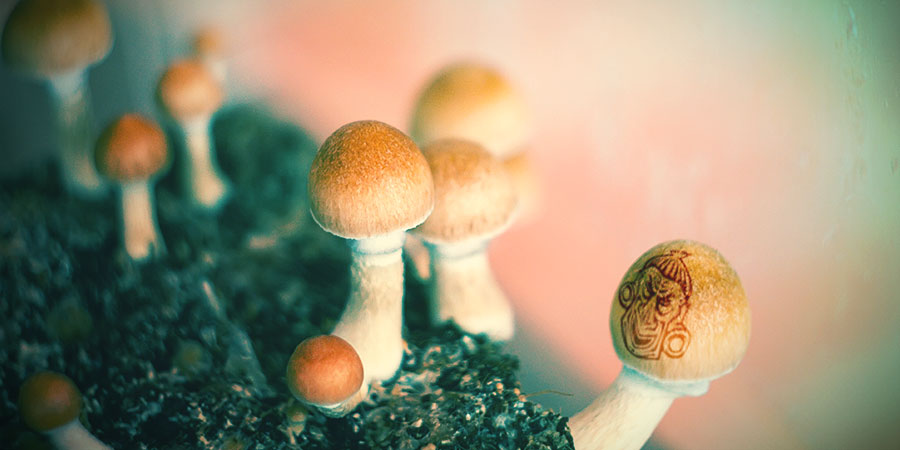Psychedelics VIPs
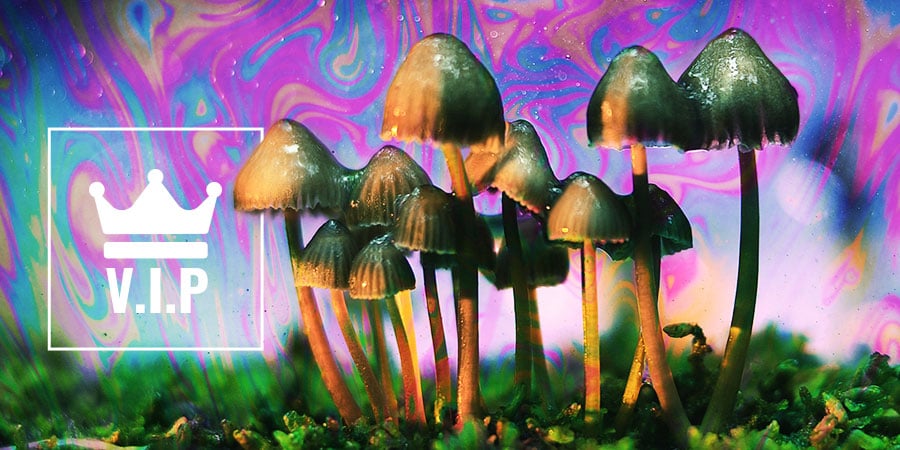
Psychedelics have come a long way in recent decades. Some of the most famous among them—LSD and psilocybin—were first synthesised in the 1930s and 1950s, respectively, before they were swiftly prohibited. Now, science and mainstream culture are beginning to embrace these substances again, and studies are showing profound results.
Let's discover the psychedelic VIPs that led, and continue to lead, the charge in research and activism surrounding these enigmatic substances.
Albert Hofmann
Albert Hofmann was born on January 11, 1906, in Baden, Switzerland to Adolf Hofmann and his wife Elisabeth (née Schenk) and grew up as the oldest of four siblings. When his father, a factory toolmaker, became seriously ill, he had to contribute to the family income and therefore began and completed a commercial apprenticeship.
Meanwhile, he was getting ready to finish his schooling. His godfather funded him during this time and in 1925 he began to study chemistry at the University of Zurich and graduated with honors four years later. Until his retirement in 1971, he worked for more than four decades at Sandoz in Basel.
The Accidental Discovery Of LSD
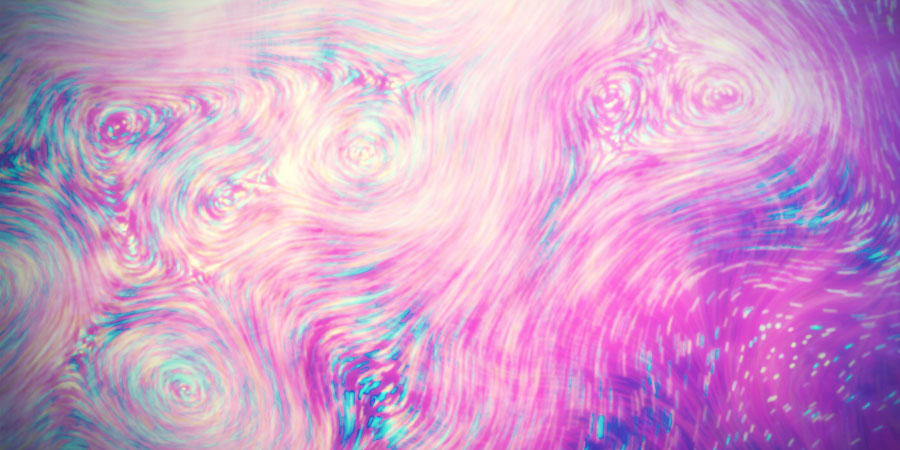
Working as an employee of the pharmaceutical-chemical department of Sandoz Laboratories in Basel, Hofmann researched the grain fungus ergot with the aim to develop a circulatory and respiratory stimulant. In 1938, he synthesized various amide derivatives of lysergic acid. The 25th of them caused unrest among the tested animals, but did not seem to be useful or interesting enough for further pharmacological research and was no longer tested. Until April 16, 1943, when he decided to produce LSD again.
While working with it, he suddenly felt restlessness, discomfort and slight dizziness, so he had to stop, took his bicycle and drove home. Once home he had to lay down and closed his eyes because he found the daylight to be unpleasantly and intensively bright. For two hours he had an extremely stimulated imagination and "saw" what he described as a steady stream of kaleidoscopic plays of colors, fantastic pictures and amazing shapes. In his book "LSD - My Problem Child" he admits that he probably accidentally absorbed the LSD from the fingertips.
On April 19, 1943, at 4:20 pm Hofmann intentionally ingested 250 micrograms of LSD, an amount that nowadays is considered three to five times as much as the effective dose. And no, this time of day has nothing to do with the origin of the "420" marijuana smokers use.
What Is "Bicycle Day"?
Three days later, he wrote down what happened after he had ingested LSD 25 in a self-experiment. He wrote that by 17:00 he felt slight dizziness and anxiety, had a blurred/altered vision, underwent paralysis and had the urge to laugh. He further reported that what he felt and saw was of the same type as the experience the day before, but much more intense.
He was barely able to write and only with the greatest effort he was able ask his laboratory assistant to escort him home - on the BICYCLE! On this "trip" home he felt as if he was barely moving, but his assistant later reported they actually drove pretty fast.
His view had totally altered and Hofmann felt threatened by his state, because what once was familiar, had turned into something obscure and seemed to have an own life, everything was moving. When he met his neighbor woman Mrs. R., he perceived her as a vicious, insidious witch with a colored grimace.
Once home, the dizziness and feeling of fainting were so intense that he had to lie down on the couch. Towards the end of the trip, he started to enjoy the experience because now he was not only "seeing" a stream of fantastic images twisting into spirals and bursting colorful fountains with his eyes closed, but his acoustic perception seemed to have connected to the stream and every noise affected the pictures he saw.
Hofmann's Attitude Towards Psychedelics
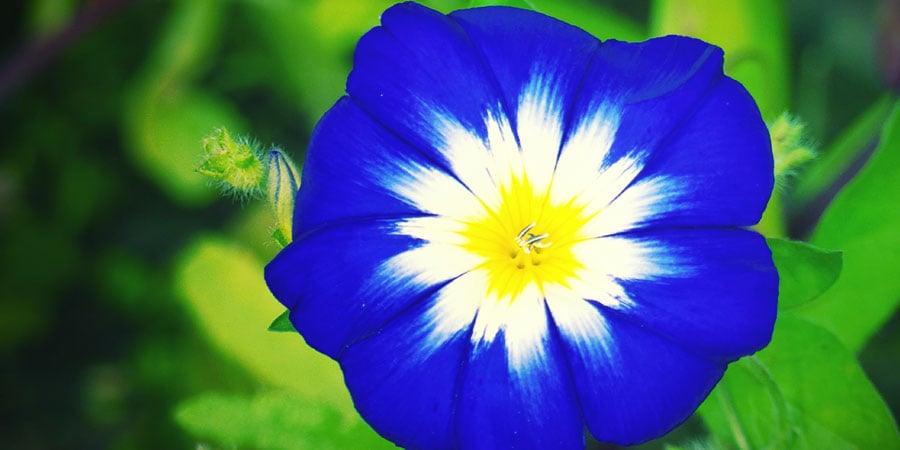
Ever since researching psychedelic substances such as LSD and psilocybin, he became an advocate of their use in psychoanalysis and legalization for research purposes. He criticized the misuse of them by the Counterculture in the 1960s and the worldwide prohibition of LSD 25. He always hoped it would be used for a proper purpose.
Hofmann was also interested in the seeds of Turbina corymbosa, a Mexican morning glory species that contains LSA, lysergic acid amide, which he found to be closely related to LSD.
In 1962, Hofmann became the director of the natural products department at Sandoz and had already studied the hallucinogenic substances found in Mexican magic mushrooms. He isolated and synthesized psilocybin, and he and his wife traveled to southern Mexico to search for "Ska Maria Pastora" (Leaves of Mary the Shepherdess), the plant that would later be known as Salvia divinorum. He obtained samples of it, but never identified its active compound, the diterpenoid salvinorin A.
Terence McKenna
Terence Kemp McKenna was born on November 16, 1946, in Paonia, Colorado, United States, a cattle and coal town in which he was raised by his father, an Irish Catholic traveling salesman and his mother, a Welsh Episcopalian housewife. His uncle introduced him to geology and he developed what he called "his first obsession": solitary fossil hunting in the arroyos near his home. This and his fertile imagination made him develop a deeply artistic and scientific appreciation of nature.
In 1962, at the age of 16, he and his family moved to Los Altos in California and he finished high school in Lancaster. According to Terence, he got acquainted to weed shortly after his 17th birthday in 1963 and started smoking it on a regular basis. The same year he discovered the literary world of psychedelics through The Doors of Perception and Heaven and Hell by Aldous Huxley.
His First Psychedelic Experience

In 1965, Terence enrolled at the Berkeley University of California to study art history. In the summer of 1966, McKenna lived across the hall from "a strange guy's flat with blacked out windows, and all light bulbs in his apartment painted red". He would sit around with his guitar all day long, playing the chords to "Freight Train." That guy would become his guide into the world of acid, it was Barry Melton, the lead guitarist of Country Joe and the Fish.
Terence's first psychedelic experience had, according to him, "qualities that were never repeated," and that he "ricocheted between tears of awe and tears of hilarity for about an hour."
McKenna's Interest In The Psychedelic World Continues
In 1967, while in college, he discovered Tibetan folk religion and began studying it, which the led him to studying shamanism - he referred to this as his "opium and kabbala phase." In the year 1969, Terence's "interest in Tibetan painting and hallucinogenic shamanism" had grown so strong, that he traveled to Nepal to study the Tibetan language.
He also tried his luck as a hashish smuggler, but when one of his shipments was busted by the US customs, he had to escape prosecution and started wandering through Southeast Asia, where he viewed ruins, collected butterflies in Indonesia and even worked as an English teacher in Tokyo. After all those escapades in the East he returned to Berkeley to continue studying biology, which he called "his first love."
Magic Mushrooms
In 1971, he, his younger brother Dennis and three friends went on a quest in the Colombian Amazon, searching for a plant called Oo-koo-hé, which was supposed to contain Dimethyltryptamine (DMT). But instead of Oo-koo-hé they encountered the use of various Ayahuasca and Yagé brews and mushrooms of the Psilocybe cubensis species.
These "magic mushrooms" soon became the new main focus of the exploration and in La Chorrera he and his brother became subjects of a self-experiment, which, according to a later interview with Terence, "put him in contact with 'Logos', an informative, divine voice that reputed revelations."
In 1972 they returned to Berkeley and developed techniques for cultivating psilocybin mushroom, while Terence now worked on his Bachelor of Science in ecology and conservation. He graduated in 1975 and had his first book (with Dennis as co-author) released, "The Invisible Landscape." Their book had been inspired by their Amazon experiences and the second one followed in 1976 already, "Psilocybin."
A Revered Author And Psychedelics Icon
In the early 1980s, Terance started to articulate his thoughts about psychedelic drugs and virtual reality and on his weekend workshops he repeatedly stressed the importance and primacy of felt experience, as opposed to dogma.
In 1992, he published two books and became a fixture of the popular counterculture. Both "Food of the Gods", a radical history of the relationship between psychedelic plants and the evolution of consciousness and "The Archaic Revival", a collection of articles and talks from various magazines and lectures, added to his popularity in the rave/dance scene.
Terence was still lecturing about the use of plant-based entheogens, psychedelics, metaphysics, and other subjects such as shamanism, language, historical and civilizational time-lines and even the theoretical origins of human consciousness, his "Stoned Ape" theory.
Facing The End
He was now splitting his time between the redwood-studded hills of Sonoma County in California and Hawaii, but in 1999 he began to suffer from increasingly painful headaches and returned to his home on the big island of Hawaii. After three brain seizures in one night he was rushed to the hospital where he was diagnosed with Glioblastoma multiforme and underwent various treatments throughout the next months.
In late 1999, Erik Davis conducted what would be the last interview with Terence. During the interview he also talked about the announcement of his death:
"I always thought death would come on the freeway in a few horrifying moments, so you'd have no time to sort it out. Having months and months to look at it and think about it and talk to people and hear what they have to say, it's a kind of blessing. It's certainly an opportunity to grow up and get a grip and sort it all out. Just being told by an unsmiling guy in a white coat that you're going to be dead in four months definitely turns on the lights. ... It makes life rich and poignant. When it first happened, and I got these diagnoses, I could see the light of eternity, a la William Blake, shining through every leaf. I mean, a bug walking across the ground moved me to tears."
McKenna died far too young on April 3, 2000, at the age of only 53, with his loved ones at his side. He is survived by his daughter Klea, his son Finn and brother Dennis.
Alexander Shulgin
Alexander "Sasha" Theodore Shulgin has synthesized and self-tested more than three hundred psychoactive substances in his experiments, which makes him one of the persons with the most personal and practical experience with psychedelics. The best-known discoveries he made are DOM and 2C-B. On the streets, DOM was called STP or Super LSD. He published the results of his work in four books and more than two hundred journal publications.
The Early Years
Alexander was born on June 17, 1925 in Berkeley, California to Theodore Stevens Shulgin and Henrietta D. Shulgin. His father was born in Orenburg, Russia and came to the United States in 1923, while Henrietta was born in Illinois. Both his parents were public school teachers in Alameda County.
In 1941, Alexander began studying organic chemistry at the Harvard University, but in 1943 he dropped out of school to serve in the U.S. Navy, where he would have his first experience with psycho-pharmaceuticals. Prior to a surgery, Alexander was given a glass of orange juice by a military nurse and he drank it in the assumption that it contained a psychoactive drug of sorts.
Quickly after drinking the juice, he fell asleep, only find out the next day he had been given a placebo. This was when he got interested in psycho-pharmacology, because he was amazed at how "a fraction of a gram of sugar had rendered him unconscious."
After his time in the Navy he went to Berkeley, California and earned his Ph.D. in biochemistry in 1954. He completed his post-doctoral research work in the fields of psychiatry and pharmacology at the University of California in San Francisco throughout the following years, and after a short interlude at Bio-Rad Laboratories he began to work for Dow Chemical Company as a senior research chemist.
Self-experimenting With Psychedelics
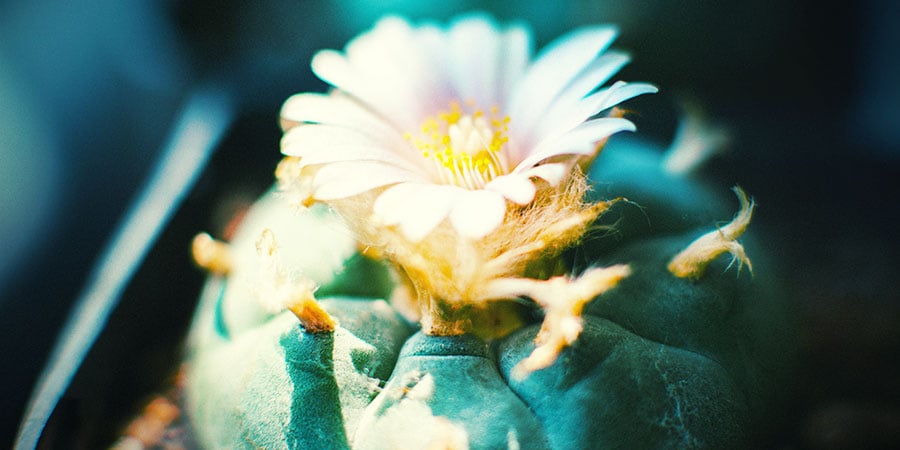
In the late 1950s he had his first mescaline experience and "learned that there is a great deal inside him." His chance to delve much deeper into psychoactives came after he had developed the first biodegradable pesticide, Zectran.
Zectran was a very profitable patent and Dow Chemicals granted Alexander the freedom to conduct his own research on new drugs and their activity and he began to examine them through self-tests. He published his results in contemporary journals such as the Journal of Organic Chemistry and Nature magazine.
In the 1960s a small group of friends joined his testing sessions and all results of the experiments with phenethylamines and later tryptamines were painstakingly recorded, but after the big media stir about the abuse of street drugs, Dow Chemicals interdicted Alexander to stop publishing his experiences and results while working for them, because they were afraid of the public reaction to Alexander's work. He left Dow Chemicals in 1965 to teach classes at the San Francisco General Hospital and in local universities.
Meanwhile, he and his friends had developed the Shulgin Rating Scale to quantify the experiences and effects of each of the substances and they created reports for hundreds of psychoactive chemical substances.
Shulgin And MDMA

In 1967, at San Francisco State University, Alexander was introduced to MDMA by a graduate student in a medicinal chemistry group he advised.
MDMA (better known as Ecstasy or "E" on the streets) was first manufactured and patented by Merck in 1912, but since it had never been explored, Alexander developed a new synthesis method and in 1976 he gave the drug to Leo Zeff, a psychologist from Oakland in California who would administer small doses of the substance to his patients in his practice as an aid to talk therapy and introduced it to hundreds of psychologists across the nation.
As A Published Author, Shulgin Clashes With The DEA
Alexander Shulgin served as an expert witness and provided pharmacological samples for the DEA and in 1988 he wrote the definitive manual "Controlled Substances: Chemical & Legal Guide to Federal Drug Laws." In order to carry out his consulting work for the DEA, he was issued a Schedule I license, which granted him permission to set up an analytical laboratory and possession of synthesized scheduled substances.
In 1991, he and his wife published "PiHKAL - A Chemical Love Story," wherein the main title is an acronym that stands for "Phenethylamines I Have Known and Loved". The book is separated in two volumes: The first part is a story of a pharmacologist and his wife and the second contains detailed synthesis instructions for over 200 psychedelic compounds (most of which Alexander discovered himself), bioassays, dosages and other commentary.
In 1994, the DEA demanded Alexander to turn over his license for violating its terms and raided his laboratory. And although two announced and scheduled reviews had failed to find any irregularities in the 15 years prior to the publication of PiHKAL, he was fined $25.000 for possession of analytical samples.
Richard Meyer, spokesman for DEA's San Francisco Field Division, stated that "those books were pretty much cookbooks on how to make illegal drugs" and that agents had told him that they had found copies of those books in clandestine labs they had raided. But Alexander and Ann continued to develop and test new psychoactive substances within the boundaries of the law and in 1997 they published "TiHKAL - A Continuation".
This main title is an acronym for "Tryptamines I Have Known and Loved" and is about a family of psychoactive drugs known as tryptamines. Just like PiKHAL it consists of two parts, wherein the first part is a continuation of the fictional autobiography of a pharmacologist, while the second part is a collection of essays on topics ranging from psychotherapy and the Jungian mind to the prevalence of DMT in nature, Ayahuasca and the war on drugs.
With the assistance of Tania Manning and Paul F. Daley he released the long-awaited comprehensive catalog of the known psychedelics "The Shulgin Index" in March 2011.
Alexander Shulgin passed away in 2014, peacefully, in his home in Northern California.
Advocating For Education, not Criminalisation
Alexander believed the government should not enacts laws that interfere with one's personal behavior and also that it all depends on why, for what desired effect, how and how often drugs are used. Instead, providing precise instructions about responsible use might actually prevent abuse. As with coffee, alcohol, salt or fat, measure matters.
Doña María Sabina
According to R. Wasson, a US ethnomycologist and banker, Doña María Sabina was born on the 17th of March, 1894, but her mother María Concepción said, that her daughter had been born on the day of the Virgin Magdalene, which is on July 22nd.
Doña María's father Crisanto Feliciano died from an illness when she was only three years old so her mother took her and her younger sister María Ana to live with her parents in the Sierra Mazateca of southern Mexico, in the house of her maternal grandparents.
First Contact With Magic Mushrooms
Doña María got acquainted to magic mushrooms at a very early age. She said that she could recall playing with her little sister when she was only 7 years old while they were tending the family's animals, when she saw a bunch of beautiful mushrooms growing beneath a tree. She recognized that those were the same mushrooms as the local curandero (healer) Juan Manuel used in his ceremonies to cure the sick, so she picked some of them and ate them. María told her sister to do the same and soon she felt the magic effects of the divine mushrooms.
The following months both she and her sister would consume the magic mushrooms several times and even though her mother once caught her and asked what she had done when she was laughing and singing in exuberant joy, she was never scolded for consuming the magic mushrooms.
Doña María Harnesses The Power Of Psylocybin
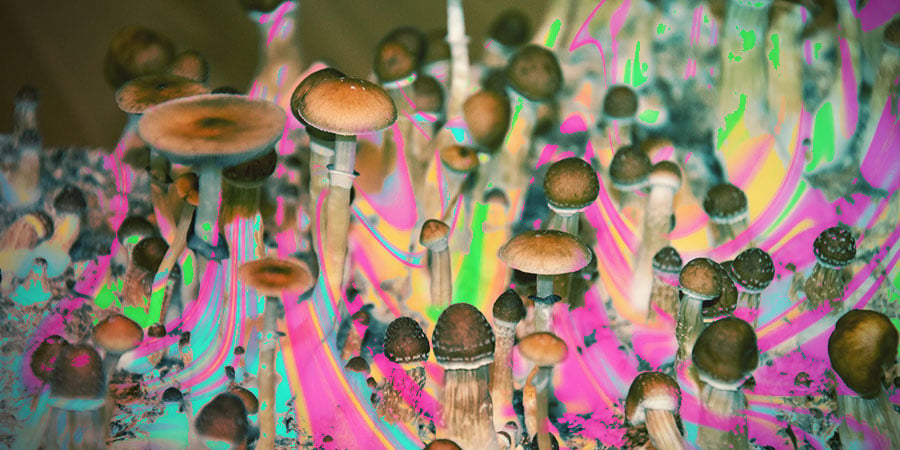
When she was eight years old her uncle fell sick and many shamans from the surrounding Sierras near her village failed to cure him with their herbs, his condition only got worse instead. She then remembered the mushrooms she had taken and that they had offered to help if she should ever need it.
Doña María went to collect some the sacred mushrooms and ate them. When the effects came on she would ask the mushrooms how she could help her uncle to get well again and the mushrooms told her that she would have to give him a special herb to expel the "evil spirit" that had entered her uncle's blood and possessed him.
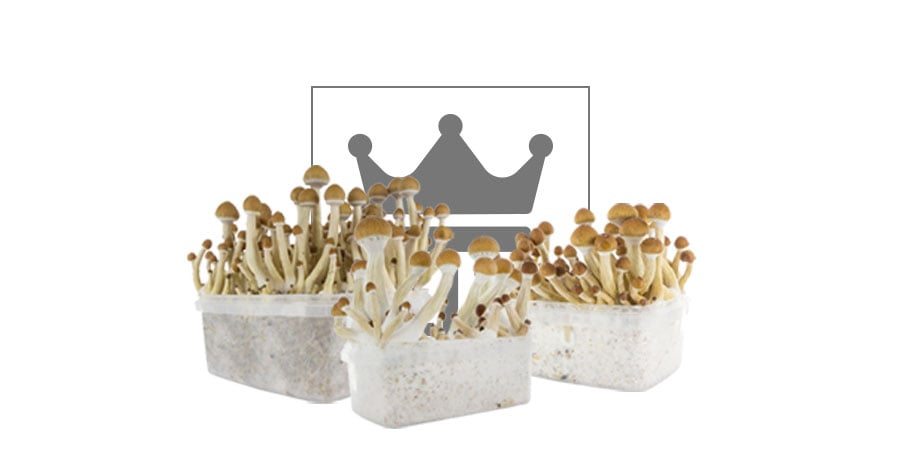
The mushrooms told her that she would need a different herb than the shamans had used and that she would find it in a place in the mountains, where the waters of the brook run pure and the trees grow tall. Knowing the place the mushrooms hinted her to, she ran and fetched some of the herb. She made a concoction and gave it to her uncle and within only a few days he was cured.
This was when Doña María knew that this would become her way of life and as she grew older, she became respected as an honest and powerful "Sabia", "a wise one" in her village. Countless hundreds of sick and suffering people sought out her magic throughout the decades she conducted her healing ceremonies.
The World Hears Of A Special Healer
It was in 1955, when the first Westerner came to the little village of Huautla de Jimenez in Oaxaca. R. Gordon Wasson, a US ethnomycologist and banker visited Doña María's hometown and he also was first Westerner participating in a velada with her. Wasson brought spores to Paris, where he identified it as Psilocybe mexicana. Its main active ingredients were isolated and synthesized by Swiss chemist Albert Hofmann in 1958.
Although Wasson tried to keep Doña María's identity a secret, the story of the Mazatec Sabia and his experiences with her magic mushrooms inevitably spread throughout the West like wildfire after he had first written of Doña María and her ceremonies in the Life magazine in May 1957.
Soon thousands of mushroom seekers, scientists and others arrived in the Sierra Mazateca, among them 60s celebrities, including rock stars such as John Lennon, Bob Dylan, Mick Jagger and Keith Richards and even the CIA sent an undercover agent to collect specimens of the magic mushrooms.
Regret And Unwanted Attention
Doña María said:
"Before Wasson, nobody took the children (magic mushrooms) simply to find God. They were always taken to cure the sick."
Another remarkable citation implies her regrets having shown her magic to Wasson:
"From the moment the foreigners arrived, the 'holy children' lost their purity. They lost their force, they ruined them. Henceforth they will no longer work. There is no remedy for it."
Each time she gave the visitors what they were looking for and each time she conducted her ceremonies, she gave away a bit of herself.
Soon the Mexican police thought that she was selling drugs to the foreigners and this unwanted attention completely altered the social dynamics of the Mazatec community and threatened to terminate the Mazatec custom. The community put the blame on Doña María, exiled her and burned down the hut that had been her home for all her life.
Doña María Sabina, the most well-known and acclaimed curandera on earth died on November 23, 1985.
Alex Grey
Alex Grey, a visionary artist and philosopher, is best known for his multi-dimensional psychedelic paintings. As an avid explorer of consciousness, his painting reflect visions of life, death, and the space in between. Grey became well known for his paintings of human energetic systems and their spiritual significance.
Early years
He was born on November 29th 1953, in Columbus, Ohio as the middle child of a middle class family. Alex developed a keen interest in art from an early age, which was encouraged by his father, who worked as a graphics designer. Even from the beginning, Alex’s work already showed the themes of death and transcendence that ultimately developed into his signature style.
At the age of 18, Alex gained a full scholarship to the Columbus College of Art and Design, but dropped out at the age of 21. He went on to paint billboards for Columbus billboards advertising, but soon grew tired of it, only lasting a year.
Experiencing Psychedelics
In 1974, Alex took a position as a studio assistant in Boston where he studied under the conceptual artist Jay Jaroslav at the School of the Museum of Fine Arts. It is here where Alex really came into his artistic prime. Soon after taking the position, he met his wife to be, Allyson.
Together they started taking LSD and other psychedelics to open up their minds. It was this experience that turned Alex’s existential agnostic views to full blown radical transcendentalism. It was a journey that they continued to take together, becoming more in touch with themselves and the universe as a whole.
Working With Human Anatomy
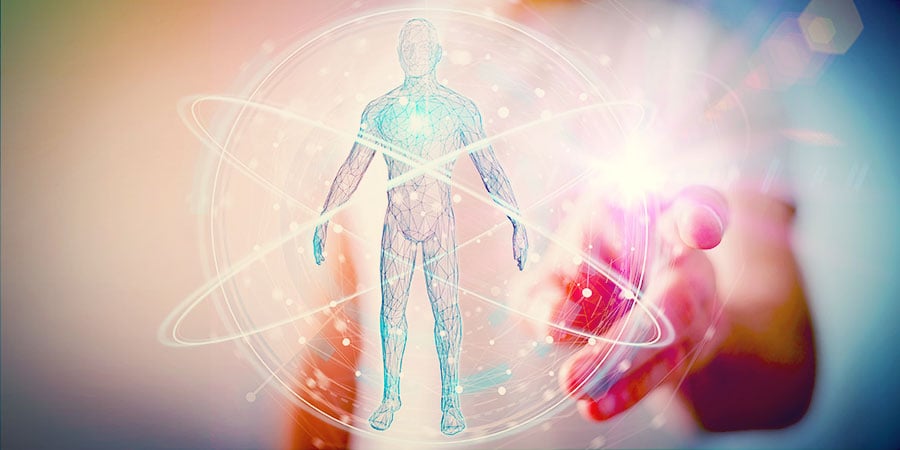
Alex later took a job working at Harvard University within the Anatomy department where he prepared cadavers for dissection. This allowed him to study the body himself, further honing his skill. Whilst still at Harvard, Alex later went on to work for Dr. Herbert Benson and Dr. Joan Borysenko as a research technologist, conducting research into healing energies.
Whilst it may not seem to be the obvious choice for an artist to take, his work with anatomy has played a large part in the realism and detail he now displays in his anatomical paintings. Doctors at Harvard saw his paintings, and offed him work as an anatomical illustrator for the university – the paintings were that accurate.
The next portion of Alex’s life was dedicated to furthering his academic career, combining what he had learned at Harvard with his artistic talent. He taught Artistic Anatomy and Figure Sculpture for the next ten years at the University of New York. He has also taught various art workshops around the USA. Both Alex and his wife Allyson still both teach Mystic Artists Guild International (MAGI) workshops at the Chapel of Sacred Mirrors in Wappinger, New York to this day.
The Chapel of Sacred Mirrors
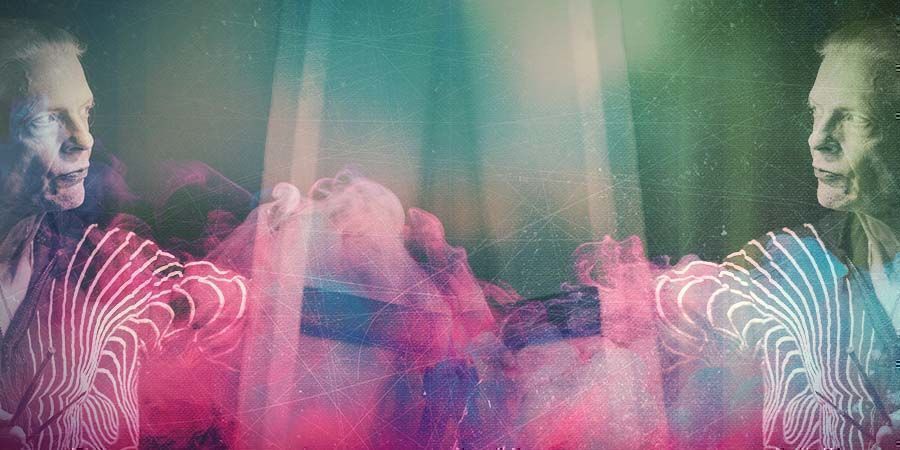
Throughout his life, Alex developed a series of life size paintings called the Sacred Mirrors. The series started in 1979 and now sit at the heart of his chapel. They take the viewer on a journey, exploring the body, mind and spirit, helping the viewer reach their own sense of inner spirituality and divinity. After finishing the Sacred Mirrors, he applied the multidimensional perspective he had developed to all other aspects of human experience, such as prayer, birth and death.
In 1996, Alex co-founded the Foundation for the Chapel of Sacred Mirrors Ltd, an organisation that seeks to inspire creativity, compassion and integral wisdom within all who looked for it. Through its increasing popularity, and its increasing significance in teaching spirituality, worship and sacramental ceremonies, the organisation was officially recognised as a religion in 2008.
Since then both Alex and his wife’s role in the spiritual world has done nothing but increase; he is now considered one of the top 20 spiritual leaders of today by the Watkins Review, being held as being in the same league as the Dali Lama and Eckhardt Tolle. The Temple of Understanding declared both the Grey’s as two of the top 50 most influential interfaith leaders alive today.
Alex now resides at the Chapel of Sacred Mirrors, which moved to a 40 acre plot of land in Wappinger, New York upon becoming a recognised religion. The large grounds are now said to act as a spiritual retreat for those who need it, offering large, lush gardens, reflective pools, spiritual ceremonies, mystical workshops, an extensive library and communal living areas. It is a center of spiritual awakening.











 United States
United States

